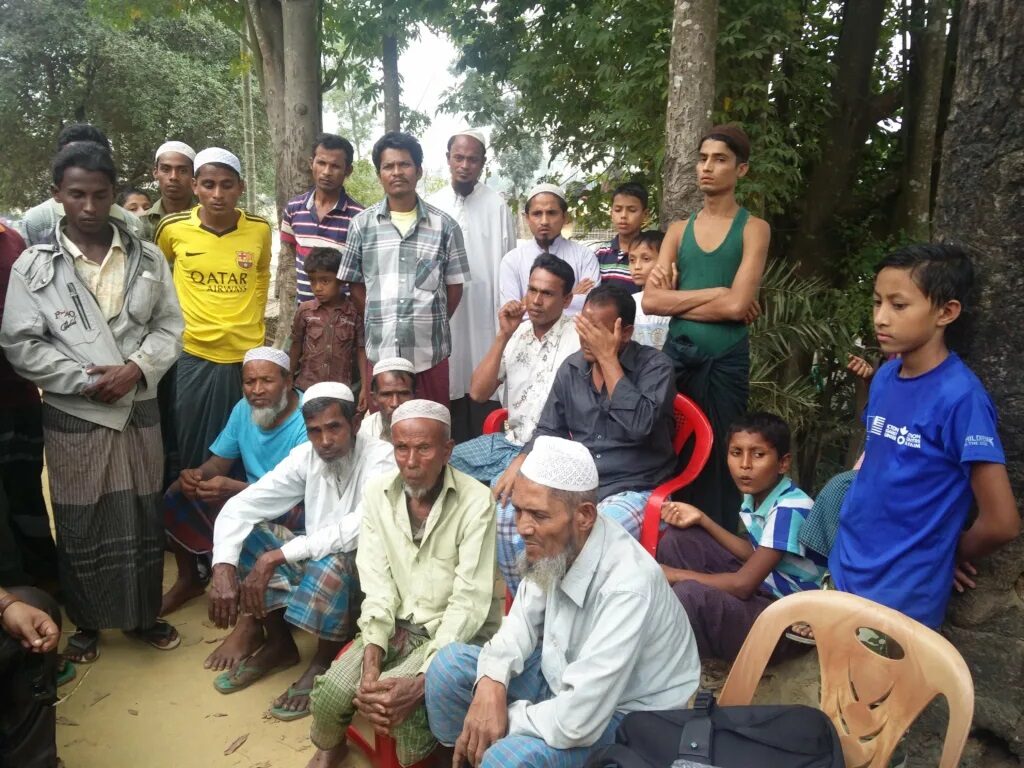How The Rohingya Mobilised Digital Solidarity
Apr 1, 2024 | Pratirodh Bureau
Rohingya refugees at Cox’s Bazar (Image: Bharat Bhushan, 360info CCBY4.0)
In January this year, a raging fire spread through crammed Rohingya refugee settlements at Kutupalong in Bangladesh’s coastal district of Cox’s Bazar, destroying shelters and displacing thousands.
An army of independent Rohingya digital content creators, who lived in the camps, took it upon themselves to catch the global attention by making short videos of the damage and arson. They were then circulated across multiple platforms.
S, a popular digital content creator from the Kutupalong camp with more than 10K followers on his public page on Facebook, for instance, made several posts and videos on the incident. One post documented how the victims not only lost their shelters but also their meagre savings as the fire gutted 50,000 Bangladeshi Taka (about USD$456) among other belongings.
The Rohingya are an exiled ethnic minority Muslim population from Myanmar that faced discrimination for decades and was made stateless through changes in citizenship laws in the home country.
In 2017, the community was subject to a genocide and was displaced within and outside the national borders. The largest exiled groups found refuge in Kutupalong and Nayapara refugee camps in the Cox’s Bazar region of Bangladesh.
Some were relocated to Bhasan Char, an island in the Bay of Bengal, a few years later. India, Malaysia, Thailand, Australia and Saudi Arabia are some of the other countries where the diaspora remains scattered.
Over the past decade, and especially since the pandemic, the online footprint of the Rohingya diaspora grew. The genocide and mass exodus of 2017 put their plight in global spotlight, as a section of the diaspora actively drew attention to their marginalisation.
Such developments marked a departure from the past, as the Rohingya, unlike other exiled groups, remained dispersed across different countries and failed to mobilise via digital networks.
Some of the exiled community members lived in relatively better conditions in the United States and other parts of the global North.
Most, however, remain restricted to remote borderlands, informal settlements, and isolated refugee camps with limited digital infrastructure in Bangladesh, Malaysia, Thailand, and other parts of the global South.
Despite this, the digital participation of the exiled population has been on the rise.
Malaysia, for instance, has more than 100,000 Rohingya who are registered with the United Nations High Commission for Refugees (UNHCR), although there is no system to process applications for asylum seekers.
Many refugees live as undocumented migrants and are often engaged in precarious, exploitative, low-paid jobs. Despite such challenges, the Malaysian activists remain at the forefront in digital infrastructure development and digital rights campaigns and employed blockchain and Web 3.0 platforms.
A Malaysia-based non-profit social enterprise called Rohingya Project, composed of stateless Rohingya and founded by Malaysia-based Rohingya activist Muhammad Noor, attempted to inscribe aspects of Rohingya individuals — biometric data, genealogy information, and records of community participation — on a digital blockchain ledger. It mimicked the national census and circumvented state rejection.
In Bangladesh, the Rohingya population is denied the right to work and formal education and the freedom of movement.
A pilot study conducted by this writer among digital content creators in Bangladesh’s Rohingya refugee camps revealed that Facebook, along with YouTube, remained the most popular platform. Young people also preferred TikTok, although the Chinese app faced intermittent bans in Bangladesh. In contrast, Twitter/ X remained popular for activist discourses.
Thanks to the growing digital connectivity across large parts of the global South, “native social media entrepreneurs” — short video producers, vloggers, and stand-up comedians — are making widespread use of social media platforms for both advocacy and for their calling in audio-visual industries.
Notwithstanding the economic precarity, digital platforms afforded content creators the promise of social and cultural empowerment, the hope of success in screen industries, and possibly the bettering of living conditions.
The network of independent Rohingya digital content creators in Bangladesh’s refugee camps reached out to the public with serious messages of hardships and the trials of refugee life as well as comedic videos and rap music.
Many also nurtured creative aspirations and the dreams of becoming an actor, rapper or filmmaker. Creative practices doubled as the tool to inspire and boost the self-esteem of a community that coped with mental health crises and a demoralised sense of the self as genocide survivors.
Kuala Lumpur-based Noor, who founded an online/satellite channel called Rohingya Vision and a digital training network called R-Academy, among other activist projects, in an interview expressed his commitment to the use of digital networks to encourage the community’s socio-economic empowerment.
Research also shows that “family-making” practices remained pertinent as community members established connected presence through the Internet with not only their biological family but the larger community.
Diasporic groups in Australia, who enjoy better socio-economic conditions, often use digital platforms to care for/send or raise money for the family that they left behind in Bangladesh’s camps.
By narrating Rohingya folktales through animation and visual storytelling, digital content creators in Kutupalong refugee camp evoked the memory of and reclaimed the motherland that they left behind. Myanmar remained the homeland they wished to return to.
Non-governmental organisations and international humanitarian agencies, which remain active in Bangladesh’s refugee camps, advocated for access to information, especially during the pandemic. Digital rights and access to information could go a long way in the fulfillment of Rohingya digital content creators’ creative aspirations.
(Originally published under Creative Commons by 360info™)
